COOPERATION MODEL
ARTIFICIAL INTELLIGENCE
PRODUCT ENGINEERING
DevOps & Cloud
LOW-CODE/NO-CODE DEVELOPMENT
INDUSTRY
FRONTEND DEVELOPMENT
CLOUD DEVELOPMENT
MOBILE APP DEVELOPMENT
LOW CODE/ NO CODE DEVELOPMENT
EMERGING TECHNOLOGIES







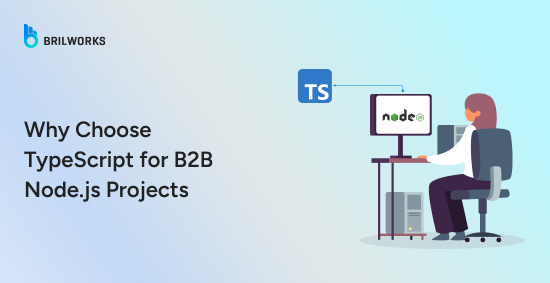
Node.js has long been a popular backend runtime for building performant backend services or applications. Today, an estimated 4.5% of websites use Node js on the backend i.e. Netflix, PayPal, LinkedIn and hundreds of thousands of companies around the world. The event-driven, non-blocking, lightweight architecture makes it the default for companies in search of a lightweight and hyper-fast runtime environment.
JavaScript is the default language in Node-powered backend projects. However, in B2B development, TypeScript is moving towards becoming a default language among expert Nodejs developers. JavaScript has some disadvantages of being a flexible language.
In the B2B domain, these disadvantages of JavaScript can be costly. That's why TypeScript usage has grown steadily over the years, as many developers have moved from JavaScript when building maintainable web applications. While JavaScript remains a more popular language, TypeScript's growth is increasing each year, and there are several logical reasons why. This blog looks at why TypeScript is on the rise, specifically in B2B projects. And what are the benefits of using it in your Next project?
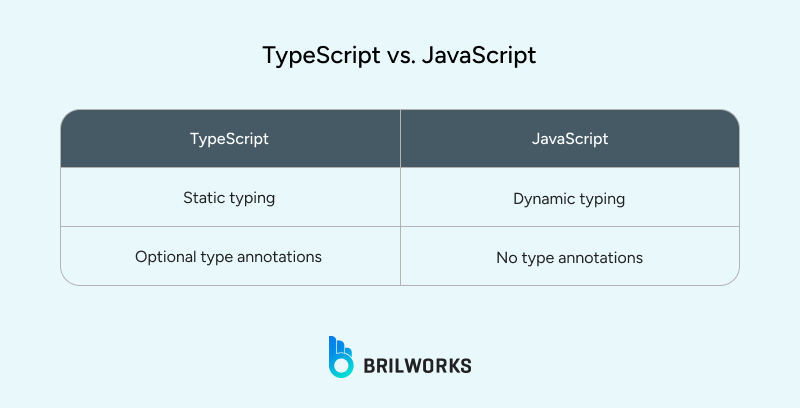
Before discussing the advantages of TypeScript over JavaScript, it is worthwhile to understand first what makes B2B projects different from other types of software development projects. In a typical B2B context, a backend system will orchestrate different types of processes, including:
Serve multiple business workflows
Integrate with third-party CRMs, ERPs, or data warehouses
Manage permission logic
Deliver consistent APIs
Scale securely
B2B apps are rarely built in a single sprint. They're long-term investments, iterated over months or years. These codebase-heavy systems have a complex logical layer. One misused or poorly used logic or structure can trigger cascading failures. In such a development, JavaScript's dynamic nature can have several disadvantages.
On the other hand, TypeScript forces developers to write quality, bug-free, maintainable code.
Major tech companies like Google, Microsoft, and Airbnb have adopted TypeScript for large-scale applications, citing improved scalability and developer productivity.
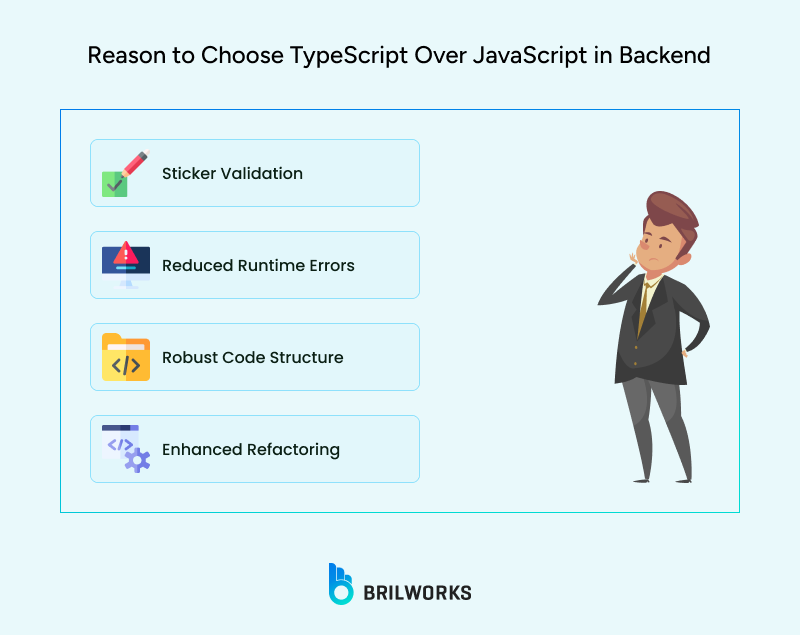
In JavaScript, you might only find bugs after the code runs. TypeScript includes static typing, which means many common issues are generally caught before the code reaches the execution funnel. We can better understand this concept with the following example.
Let's say you build a function that takes a user object with a required email field. In JavaScript, passing an object without this field could fail at runtime. In TypeScript, the compiler will flag it. Consequently, the QA team will have to do less work in debugging common issues.
In B2B applications, backend and frontend teams often work in parallel. Frontend developers rely on API responses. Now, if no strict data types are defined, the teams will rely on written or informal communication. Informal and written guidelines are prone to drift. TypeScript brings strong typing to API interfaces, making them self-documenting and verifiable.
With shared types or code generation tools (like tRPC, zod, or openapi-typescript), both ends of the application can trust the contract. When new engineers join the project, types also reduce onboarding friction. Instead of asking "what does this function return?", they can inspect it and know exactly what to expect.
In a fast-moving startup or scaling B2B product team, requirements change often. New features mean new dependencies, modified logic, or changes in data shape. Refactoring in JavaScript can be risky because the compiler can't warn you about broken dependencies.
In contrast, TypeScript makes refactoring predictable and safe. When you rename a property or refactor a utility, the compiler surfaces all the places that need updates. It's like having a built-in assistant watching your blind spots. This helps technical debt stay in check and reduces the fear of change, a crucial advantage in multi-developer environments.
TypeScript promotes type-oriented, module-based development paradigms and encourages a cleaner codebase architecture. Developers begin to write more behaviorally reusable components, pull domain logic out into types/interfaces, and loosely encapsulate behavior in a more predictable way. This architecture scales better in large projects, reducing tight coupling and making each module easier to test, mock, or swap out later.
Joining a B2B backend project midstream can be overwhelming. TypeScript reduces the guesswork. When types are in place, developers don't need to infer function arguments, check five files to understand object shapes, or run trial-and-error in the debugger.
Additionally, TypeScript's tooling increases code exploration. Reasoning tools such as VSCode can provide real-time autocompletion, inline documentation, and go-to-definition, all with type powers behind them. All of this increases the confidence of new hires, reducing their ramp-up time.
Types act as documentation that stays in sync with the code. This shared source of truth fosters clearer mental models across teams. Backend engineers, frontend developers, QA, technical managers, etc., also have an easier time digesting data structures and API flows.
Contributing to this process can be particularly useful when you have a distributed team or external contributors.
Utilizing TypeScript reduces the time to onboard a new dev in a different time zone, relatively, as they can get right to work without having to wait for a Slack response from another dev discussing the output of a function.
Bugs come at a high cost, especially in B2B development, where a broken endpoint can disrupt an integration or halt a business process. TypeScript doesn't eliminate bugs, but it can catch them earlier and skip whole classes of issues.
Based on the results of a Microsoft study, developers using TypeScript reported almost a 15% decline in their error rate over individuals using only JavaScript. Everyone benefits when you charge (or write) less per hour.
For companies in regulated industries like finance, healthcare, and legal, backend systems can be audited. When writing with TypeScript, you can be more strict with data contracts, function behaviors, and separation of concerns which demonstrates how data flows through the system, which APIs are responsible for which actions, and how error handling is done. Types can also help memorialize access controls (or domain-specific rules) that would otherwise exist only in a comment or in some unknown tribal knowledge.
A B2B system isn't designed for the present; it's designed for the many years to come. What you decide now will affect hiring, migrating platforms, and integrating with third parties in the future.
When you choose TypeScript, you're not just optimizing for your dev team today. You're also making it easier for the next dev team that inherits the system. They won't have to reverse-engineer undocumented JSON responses, or worse, wonder why a function returns null half the time. The types will tell them.
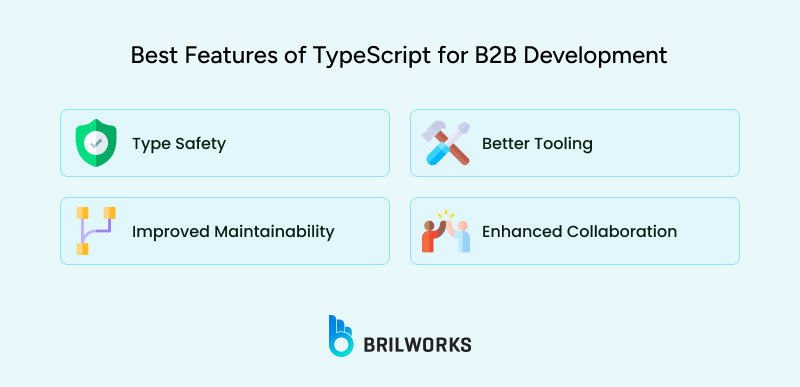
There is no technology or tool that works perfectly in every context. The same goes with TypeScript; it may not always be the right choice over JavaScript. If you want to build a prototype or internal tool, you may need to spend a lot of time setting up TypeScript.
Plus, TypeScript is widely seen as an exclusive language for serious enterprise development. In a situation when your development team is not familiar with TypeScript and is working on a tight deadline, choosing it can hinder progress because of its learning curve.
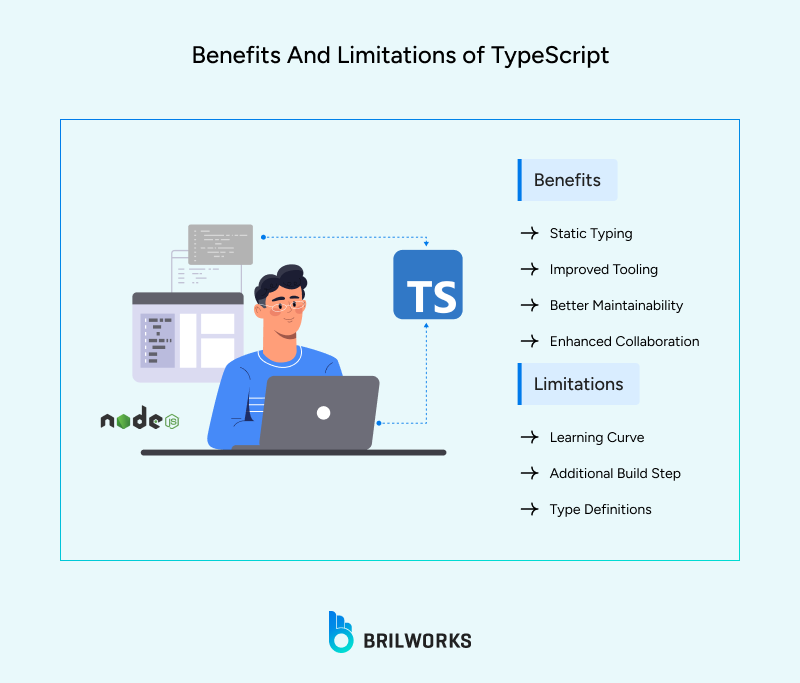
One of the most frequent objections to TypeScript is that it is "too verbose" or "too difficult to learn." I understand this concern, but it is also one that is in decline. Modern editors, starter templates (such as ts-node, tsup, or Next.js with TypeScript), and growing community support have made it so easy to get started with TypeScript that, in many teams, junior developers start using it within a couple of weeks and also adopt better habits.
Additionally, not everything needs to be perfectly typed from the start. TypeScript allows for scaling adoption. You can start with only the important ones, then cover more when your team is more comfortable with TypeScript concepts.
TypeScript adds structure, safety, and a shared language to back-end systems otherwise subject to entropy. It helps product managers rest easier knowing their APIs will behave as documented. It propels engineering leaders through the hiring process and workshops on pull requests. And, furthermore, it allows developers to move faster, not by writing more code; rather, it allows developers to write code with clarity and understanding.
Simply put, TypeScript is how serious teams develop and maintain Node.js systems, especially when building systems that have to endure, scale and support real businesses.
By introducing static typing, TypeScript catches errors before hit production and provides code that is reliable and maintainable. In addition both single-developer, and team collaborations benefit from self-documenting APIs, shared models. Often, TypeScript is used heavily in complex long-term B2B-type projects.
TypeScript's strong typing creates clear, verifiable API contracts, reducing miscommunication between frontend and backend teams. Shared types streamline onboarding and ensure consistency across distributed teams.
TypeScript's compiler flags broken dependencies during refactoring, making changes safer and faster. This reduces technical debt and supports evolving requirements in dynamic B2B environments.
TypeScript reduces many runtime errors, common in JavaScript, by flagging issues at compile time. Microsoft reported having reduced 15% error by adopting TypeScript.
TypeScript excels in production-grade, scalable B2B projects but may be overkill for quick prototypes or small tools. Its benefits shine in complex systems requiring longevity and maintainability.
Get In Touch
Contact us for your software development requirements
Get In Touch
Contact us for your software development requirements